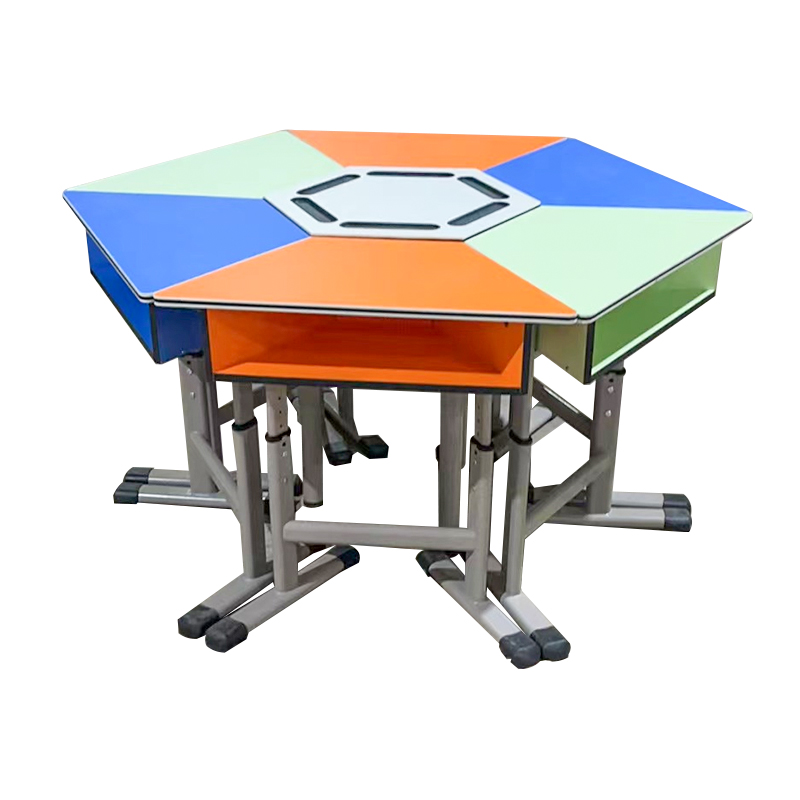
Classroom environments have evolved to support more interactive and cooperative learning. One of the key elements in this transformation is the furniture used. Selecting the right Group Learning Collaborative Classroom Table and Chair can influence how students engage, communicate, and collaborate.
Understanding the Purpose of Collaborative Furniture
Collaborative classroom furniture is designed to support group work and active learning. Unlike traditional desks, Group Learning Collaborative Classroom Table and Chair setups encourage students to face each other, share materials, and participate in discussions more freely. Before choosing furniture, educators should assess the classroom's learning goals. Are students mainly engaging in group projects, or will the space also support individual work? Understanding these needs helps determine table shapes, sizes, and configurations that good support collaborative activities.
Table Design and Layout
The design of tables plays a significant role in creating an effective learning environment. Round or trapezoid-shaped tables often promote better communication among students, while rectangular tables may suit larger groups or multi-purpose classrooms. A Group Learning Collaborative Classroom Table and Chair set should allow easy movement and flexible seating arrangements. Tables with adjustable height can accommodate students of different ages and sizes, providing comfort and promoting proper posture during extended learning sessions.
Chair Comfort and Mobility
Chairs are just as important as tables when it comes to collaboration. Ergonomic chairs support good posture, reduce fatigue, and help students focus. Many Group Learning Collaborative Classroom Table and Chair options feature lightweight, stackable chairs that are easy to move for different group activities. Smooth-rolling casters or swivel functionality can enhance flexibility, enabling students to reconfigure their seating quickly without disrupting the classroom flow.
Durability and Maintenance
Classroom furniture experiences daily use, so durability is a crucial factor. When selecting a Group Learning Collaborative Classroom Table and Chair, consider materials that can withstand frequent movement, spills, and impacts. Metal frames, laminate surfaces, and sturdy plastic components often balance longevity with ease of cleaning. Furniture that is easy to maintain reduces long-term costs and ensures the classroom remains functional and visually appealing over time.
Adaptability and Technology Integration
Modern classrooms increasingly incorporate technology into group learning. Tables with built-in cable management, charging ports, or flat surfaces suitable for laptops and tablets can support these needs. Choosing a Group Learning Collaborative Classroom Table and Chair set with adaptability in mind ensures the furniture can meet both current and evolving classroom requirements. Modular designs allow educators to change the layout quickly, fostering creativity and engagement during lessons.
Safety and Accessibility
Safety should always be a priority, especially for younger students. Rounded edges, stable legs, and non-slip feet can reduce the risk of accidents. Additionally, furniture should be accessible to all students, including those with mobility challenges. Ensuring sufficient space between tables and providing adjustable-height options can make the classroom more inclusive and comfortable for everyone.
Choosing the right collaborative classroom furniture involves balancing comfort, durability, flexibility, and functionality. A Group Learning Collaborative Classroom Table and Chair set that aligns with the classroom's teaching style and learning goals can significantly enhance student engagement and collaboration. By considering table design, chair comfort, adaptability, and safety, educators can create a space where students can work together effectively and enjoy a productive learning experience.


 English
English русский
русский Español
Español عربى
عربى
